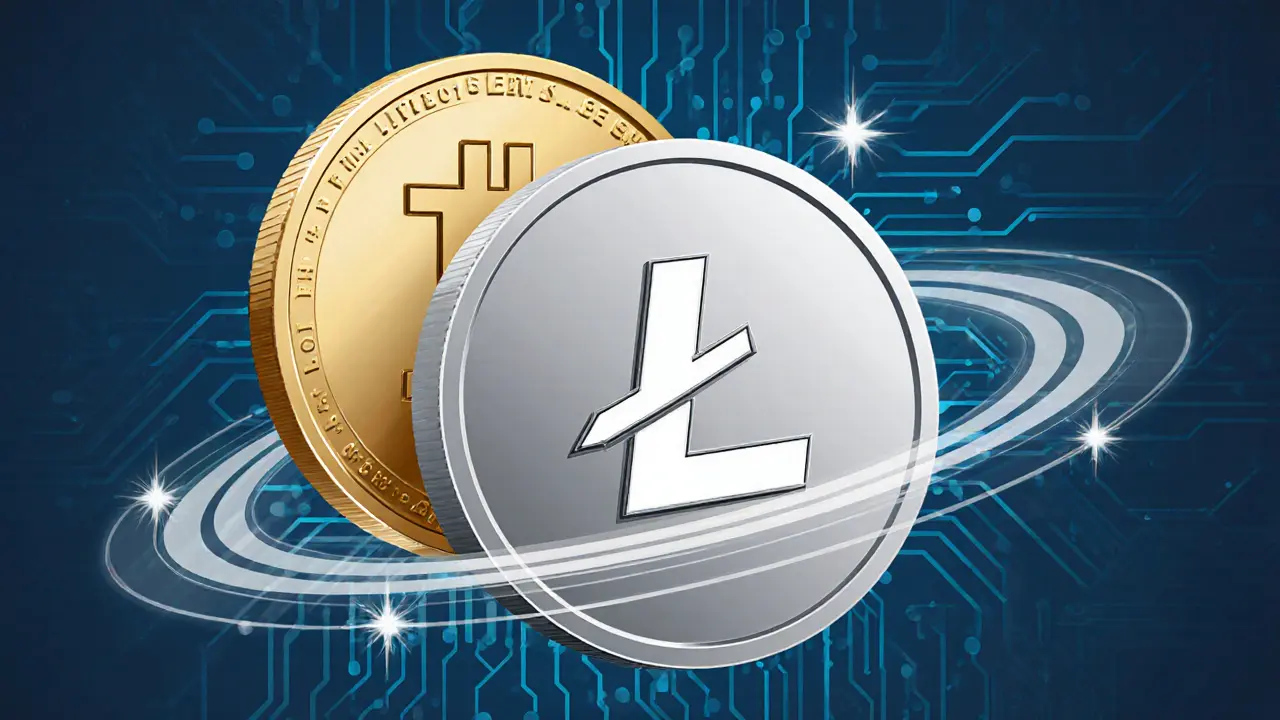Scrypt – Memory‑Hard Proof‑of‑Work Algorithm
When working with Scrypt, a memory‑hard proof‑of‑work hashing algorithm designed to be tough for custom hardware to dominate. Also known as Scrypt algorithm, it was created to make mining more accessible and to curb the early ASIC race.
Scrypt became popular because it forces miners to use both CPU/GPU cycles and a sizable amount of RAM, which balances the playing field between hobbyists and large farms. That balance shows up in the next big idea: Proof-of-Work, the consensus mechanism where participants solve cryptographic puzzles to add blocks. Proof‑of‑Work secures the blockchain, and Scrypt is one of its many flavors.
Why Scrypt Matters for Popular Coins
One of the most visible adopters is Litecoin, a peer‑to‑peer cryptocurrency that launched in 2011 as the silver to Bitcoin’s gold. Litecoin chose Scrypt to differentiate itself from Bitcoin’s SHA‑256 and to attract miners with ordinary hardware. The same logic drove Dogecoin and a handful of newer tokens that market themselves as “ASIC‑resistant”.
Because Litecoin and its peers rely on Scrypt, their mining ecosystems look different. You’ll see more GPU miners, fewer massive ASIC farms, and a community that often talks about “hashrate” in terms of megahashes per second rather than terahashes.
Another key property is ASIC resistance, the difficulty for specialized chips to achieve a significant speed advantage over general‑purpose hardware. Scrypt’s memory‑hard design raises the cost of building ASICs, which in turn shapes the decentralization profile of the network. More decentralized mining means a lower chance that a single entity can control the consensus process.
This brings us to mining difficulty, the algorithmic target that adjusts every set of blocks to keep block times steady. In Scrypt‑based chains, difficulty still changes automatically, but the memory component means that adding hashpower is a slower, costlier process. As difficulty climbs, casual miners may drop out, which can re‑centralize the hash power unless the community encourages mining incentives.
Small Scrypt coins often face a security challenge called the 51% attack. When a coin’s total hashpower is low, an attacker can rent enough GPUs to temporarily control the majority of blocks. This risk appears in posts about “Why Small Cryptocurrencies Face High 51% Attack Risk”. Understanding Scrypt’s design helps assess how vulnerable a coin might be and what counter‑measures—like checkpointing or merged mining—can mitigate the threat.
Regulators and exchanges also keep an eye on Scrypt‑based assets. Many crypto exchanges list Litecoin, Dogecoin and similar tokens, but they must evaluate the underlying algorithm’s impact on market liquidity and compliance. For instance, a post about “Crypto Exchanges Banned in Iran” highlights how certain jurisdictions restrict platforms that support specific coins, often citing concerns over mining transparency and sanction evasion.
All these pieces—Proof‑of‑Work, ASIC resistance, mining difficulty, security risks and regulatory oversight—interact to shape the real‑world experience of anyone dealing with Scrypt. Below you’ll find a curated set of articles that dig deeper into each angle, from technical breakdowns to practical guides on navigating exchanges, staying safe from attacks, and understanding the broader market context.

Litecoin (LTC) Explained: What It Is, How It Works & Future Outlook
Oct 12, 2025, Posted by Ronan Caverly
Litecoin (LTC) is a fast, low‑fee cryptocurrency created by Charlie Lee. Learn its tech, market status in 2025, MWEB privacy upgrade, and future outlook.
MORESEARCH HERE
Categories
TAGS
- decentralized exchange
- crypto exchange review
- cryptocurrency
- crypto coin
- CoinMarketCap airdrop
- smart contracts
- tokenomics
- cryptocurrency exchange safety
- crypto exchange
- cryptocurrency airdrop
- crypto airdrop
- cryptocurrency exchange
- crypto airdrop guide
- blockchain token distribution
- DeFi
- crypto exchange scam
- crypto airdrop 2025
- Ethereum
- cross-chain interoperability
- ERC-20
